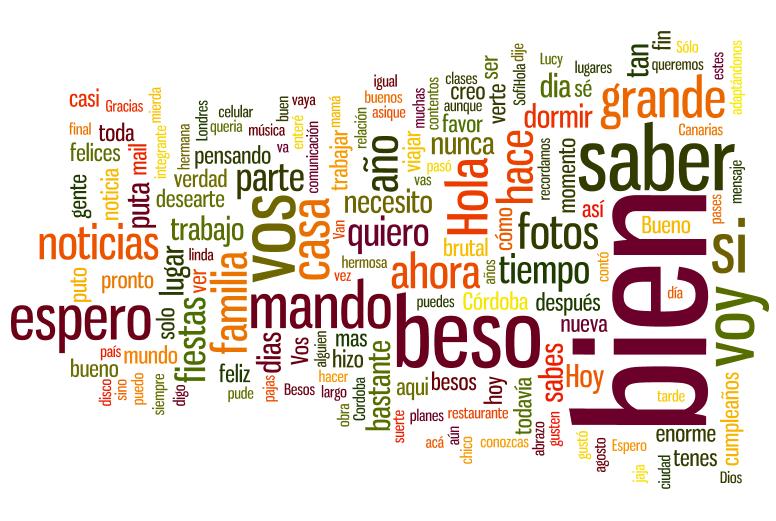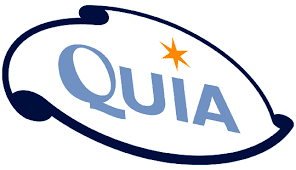
27 AP Spanish Vocabulary Terms to Help You Rock the Exam
On the free-response section of the AP Spanish exam, you’ll need to conjure up words all on your own.
Because of this, vocabulary building is essential to getting a high score on this part of the exam.
Luckily, there are lots of great resources to help you prepare and helpful terms you can work into your answers to sound more informed and well-spoken, regardless of the topic.
So with some writing practice, speaking practice and these helpful vocabulary words, you’ll be ready to rock your AP Spanish exam.
Contents
- Convincente
- Argumento
- Ensayo
- Punto
- Presentación
- Mejor dicho
- Además
- Del mismo modo
- Sin embargo
- Por lo tanto
- Al fin y al cabo
- Por ejemplo
- Notablemente
- Mensurable
- Asegurar
- Tesis
- Suposición
- Ciertamente
- Significativamente
- Considerándolo todo
- En resumen
- Analizar
- En qué medida
- Parcialidad
- Atentamente
- Distinguido
- Apreciado
- How to Use This AP Spanish Vocabulary List to Prepare for Exam Day
- AP Spanish Vocabulary Resources
Download: This blog post is available as a convenient and portable PDF that you can take anywhere. Click here to get a copy. (Download)
Convincente
Convincente means “convincing.” This will be a helpful term to use when discussing arguments in either presentational section.
Los argumentos son convincentes.
(The arguments are convincing.)
Argumento
Argumento (argument) is a word that isn’t very advanced, but it’s very useful. You can use it on the presentational speaking or writing sections to refer to your argument or the arguments in the reference materials.
Los argumentos de la oposición no son convincentes.
(The arguments of the opposition are not convincing.)
Ensayo
Ensayo means “essay.” While this isn’t a terribly advanced word, it’s helpful for the presentational speaking and writing sections. You might use ensayo to discuss the provided review materials or to refer to your essay itself.
El ensayo sobre la inmigración es muy intrigante.
(The essay on immigration is very intriguing.)
Punto
Punto (point) is also not super advanced vocabulary, but it’s often overlooked by AP students and you’ll almost definitely need it.
Like argumento, you can use punto in the presentational speaking and writing sections. You’ll use it to refer to a more specific point in your argument or in the arguments from reference materials.
El punto sobre la reforma económica no es fuerte.
(The point about economic reform is not strong.)
Presentación
Presentación means “presentation.” This will be helpful during the presentational speaking section when you want to refer back to your presentation.
Esta presentación ilustra la importancia del compromiso.
(This presentation illustrates the importance of commitment.)
Mejor dicho
Mejor dicho literally means “better said,” but it’s often used to mean “rather.”
While it would work in any of the free-response sections, it’s a really useful term to have in your arsenal for the speaking sections. This way, if you misspeak or realize you were vague, you can correct yourself while showing off your vocabulary.
La educación es buena, o mejor dicho, la educación mejora el futuro de los estudiantes.
(Education is good, or rather, education improves the future of students.)
Además
Además means “furthermore” or “additionally.” Let’s face facts: It’s really just a fancier way to say también (also). Plus, it’s an easy way to transition between ideas in any of the free-response sections.
Además, necesito más información para decidir.
(Additionally, I need more information to decide.)
Del mismo modo
Del mismo modo means “in the same way” or “similarly.” This is another good transitional phrase to use in any of the free-response sections.
Del mismo modo, el otro artículo argumenta el mismo punto.
(Similarly, the other article argues the same point.)
Sin embargo
While sin embargo literally means “without embargo,” it’s used more like “however.” Again, this is another great transitional phrase that you can use in any free-response section.
Sin embargo, algunas regulaciones son importantes.
(However, some regulations are important.)
Por lo tanto
Because you can never have too many transitional phrases, here’s another one you can use in any free-response section. Por lo tanto means “thus” or “therefore.”
Los cambios eran muy caros; por lo tanto, el gobierno los canceló.
(The changes were very expensive; therefore, the government cancelled them.)
Al fin y al cabo
Al fin y al cabo means the equivalent of “in the end” or “finally.” You can use this to transition to your final point or conclusion in either presentational section.
Al fin y al cabo, todos necesitan trabajar juntos para resolver el problema.
(Finally, everyone needs to work together to resolve the problem.)
Por ejemplo
Por ejemplo means “for example.” You can use this to illustrate your points in either presentational section.
Por ejemplo, cada año hay estudiantes que no se gradúan.
(For example, every year there are students who do not graduate.)
Notablemente
Notablemente means “notably” or “noticeably.” This is another helpful transitional word to use in (you guessed it) any of the free-response sections. However, you can also use it within a sentence to emphasize your point.
El senador estaba notablemente ausente.
(The senator was noticeably absent.)
Mensurable
Mensurable means “measurable.” This is a helpful term for discussing quantifiable information in either presentational section.
Diferencias mensurables existen entre estudiantes de escuelas diferentes.
(Measurable differences exist between students from different schools.)
Asegurar
Asegurar means “to ensure.” While you might be able to work it into any free-response section, you’re most likely to be able to incorporate it in either presentational section or in the written email.
Quiero asegurar que la información está exacta.
(I want to ensure that the information is accurate.)
Tesis
Tesis means “thesis,” which is the main argument of a paper. You might want to use this term when discussing the main arguments of reference materials in the presentational sections.
La tesis del autor es que cada persona necesita derechos.
(The thesis of the author is that every person needs rights.)
Suposición
Suposición means “supposition” or “assumption.” This term will help you discuss other people’s arguments in the presentational section.
El argumento se basa en la suposición que todos pueden digerir el queso.
(The argument is based on the assumption that everyone can digest cheese.)
Ciertamente
Ciertamente means “certainly.” This is a helpful term you can use to express confidence in any of the free-response sections.
Ciertamente quiero torta.
(I certainly want cake.)
Significativamente
Significativamente means “significantly.” This can be used for emphasis in any free-response section, but it would make the most sense in the presentational sections. Plus, it’s really long, so that’s impressive.
Las tasas han aumentado significativamente.
(The rates have increased significantly.)
Considerándolo todo
Considerándolo todo literally means “considering it all,” but it’s used to mean “all in all.” This is a helpful phrase to use to segue to your conclusion in either presentational section.
Considerándolo todo, el queso es algo bueno.
(All in all, cheese is a good thing.)
En resumen
En resumen means “in summary.” This is another good way to segue to your conclusion in either presentational section or to summarize what you covered in the email.
En resumen, usted no necesita comprar otra ardilla para la oficina.
(In summary, you do not need to buy another squirrel for the office.)
Analizar
Analizar means “to analyze.” While it isn’t a complex word, it’s very useful for discussing material in the presentational sections.
El autor analizó los datos.
(The author analyzed the data.)
En qué medida
En qué medida means “to what extent.” This is a helpful phrase for either presentational section.
El artículo analiza en qué medida los estudiantes necesitan la tarea.
(The article analyzes to what extent students need homework.)
Parcialidad
Parcialidad means “bias.” This is a helpful term to use in the presentational sections to discuss any uneven or slanted information.
El autor debe evaluar la información sin parcialidad.
(The author should evaluate the information without bias.)
Atentamente
Atentamente literally means “attentively,” but it’s used to mean “sincerely” when signing letters. It’s formal, so it’s great for signing your free-response email.
Atentamente, Sra. Alvarez
(Sincerely, Mrs. Alvarez)
Distinguido
Distinguido (distinguished) can also be feminine, as distinguida. This term is a formal greeting for letters, so it’s also helpful for the email free-response section.
Distinguida Sra. García,
(Distinguished Mrs. Garcia,)
Apreciado
Apreciado and the feminine apreciada mean “appreciated,” but are used as formal greetings in letters (like how we use “dear” in English). It would be an appropriate greeting for your free-response email.
Apreciado Sr. Smith,
(Dear Mr. Smith,)
How to Use This AP Spanish Vocabulary List to Prepare for Exam Day
Practice writing essays and delivering presentations. The more frequently you write and present in Spanish, the less intimidating it’ll be on the test. Make note of which Spanish essay words and phrases you want to use but don’t yet know, then look them up and study them.
Use the most specific words possible. If you don’t know an exact word, piece together words you do know. The more precise you can be on the AP test, the more you’ll showcase your command of the language.
Make a point of using less common words and phrases. It’s easy to lean on simple Spanish words. Try to avoid this on the AP Spanish free-response section, because the test graders will have no way to confirm that you’re an advanced speaker and writer.
Commit to daily practice. Spend at least 10 minutes a day on vocabulary studies to help the terms become part of your active vocabulary. A good method is making flashcards and reviewing words consistently with quizzes, sentence-writing or other exercises.
Use multiple study methods. You can watch movies, watch television, read books and listen to podcasts, all in Spanish! Language learning software programs and Spanish apps can also make daily practice easy. The more you see and hear your vocabulary in various contexts, the better you’ll remember the terms.
AP Spanish Vocabulary Resources
Flashcards from Varsity Tutors
Varsity Tutors is predominantly a tutoring company, but they also offer extensive study materials and free resources.
There are dozens of flashcard sets to help you prepare and focus on any weak spots in your vocabulary. The cards also explain why the right answer is correct for more in-depth learning.
FluentU
Other sites use scripted content. FluentU uses a natural approach that helps you ease into the Spanish language and culture over time. You’ll learn Spanish as it’s actually spoken by real people.
FluentU has a wide variety of videos topics, as you can see here:

FluentU brings native videos within reach with interactive transcripts. You can tap on any word to look it up instantly. Every definition has examples that have been written to help you understand how the word is used.
Plus, if you see an interesting word you don’t know, you can add it to a vocab list.

Review a complete interactive transcript under the Dialogue tab, and find words and phrases listed under Vocab.

Learn all the vocabulary in any video with FluentU’s robust learning engine. Swipe left or right to see more examples of the word you’re on.

The best part is that FluentU keeps track of the vocabulary that you’re learning, and gives you extra practice with difficult words. It'll even remind you when it’s time to review what you’ve learned. Every learner has a truly personalized experience, even if they’re studying with the same video.
Start using the FluentU website on your computer or tablet or, better yet, download the FluentU app from the iTunes or Google Play store. Click here to take advantage of our current sale! (Expires at the end of this month.)
“Barron’s AP Spanish Flashcards”
Barron’s, known for their wide range of helpful study guides and other educational books, also have AP Spanish flashcards available for purchase.
These are great for more tactile learners who tire of studying online. They’re divided into categories, so you can focus only on vocabulary or work on grammar, reading, listening, speaking or writing as well.
When it comes to learning vocabulary for the AP Spanish exam, Pinterest users bring their A-game.
The “AP Spanish vocabulary” pins (linked above) are a treasure trove of helpful charts and graphics you can use to study for the exam.
Cram
Cram is dedicated to developing effective flashcard sets that employ the Leitner system (focused on repetition) to aid learning.
You can peruse plenty of AP Spanish decks on the site. This set of useful essay terms is particularly great for preparing for the writing portion of the AP Spanish exam.
Quia
This unique website provides templates for users to input information to create games, activities, quizzes and flashcards.
Often, the information is submitted by teachers looking to assist their own students.
This collection, created by a high school Spanish teacher, is grouped thematically to help you link related terms in your mind—try studying them with the flashcards, the matching game, the concentration game or the word search!
Brainscape
This program uses cognitive science research to create flashcards to help learners acquire knowledge quickly. They refer to them as “the world’s smartest flashcards.”
Brainscape offers AP Spanish flashcards that you can study on your mobile device or desktop. You can track your learning and/or study with friends, too.
There’s free basic access, but full access requires a fee.
Quizlet
Quizlet offers users the opportunity to create, access and share word lists and games.
For each word list, you can view the set, study them as flashcards or play a timed matching game.
There are dozens of user-created AP Spanish word lists. You can try this set for words focused on the themes contained in the AP exam.
“Palabra por Palabra”
This is an advanced Spanish vocabulary book, available for purchase. It offers some unique and easy-to-use words and phrases that will help you out on the AP Spanish exam.
The first section focuses on ways to express opinions and ideas—great for both the writing and speaking sections of the test. Other sections include vocabulary for health, technology, culture and other exam-relevant topics.
“Spanish Idioms and Advanced Vocabulary SparkCharts”
If you need to branch out from books, flashcards and online learning, this four-page chart is a great option.
There’s helpful vocabulary in a convenient format that can easily be carried with you.
Whenever you have a few minutes, take it out to study—it all adds up.
With these useful words and some steady practice, you’ll be more than ready to rock the AP Spanish free-response section!
Download: This blog post is available as a convenient and portable PDF that you can take anywhere. Click here to get a copy. (Download)












